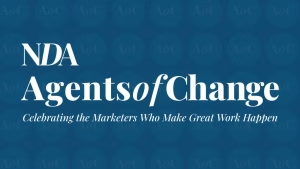As every business gets to grips with the new normal, and prepares to emerge from it, New Digital Age has launched a series featuring tips on best practice for success.
By Rob Pellow, Digital Experience Director, Armadillo
A quick glance at my inbox shows Coronavirus messaging is widely open to interpretation. Some businesses have taken to communicating for the sake of it, sharing generic (but sympathetic) standpoints.
Others seem to have missed the mark by abandoning strategy in favour of tactics. As is always the case, CRM must be carefully crafted, informative and serve a clear purpose.
We’re still too often being bombarded with long and heavy company Covid-19 policies that mean nothing to many of us, and while we are feeling disconnected from our loved ones and the wider world, impersonal and dry CRM continues to sit unread in our inboxes.
It’s time to remind ourselves what good and effective email looks like, especially in the current climate. Here are five elements that are vital to CRM best practice.
1. CRM is the perfect channel for continuing to communicate with your audience
Shrugging off its direct response label, email is now also an awareness channel, and a very effective one at that. Internet use has doubled (according to Openreach data), and so we know that currently, email and online channels are where people are reading news and finding information.
Businesses need to be in this space more than ever. Email is a particularly powerful channel as it allows you to communicate directly to customers, and also affords the opportunity to be relevant and flexible right up until the moment the email is sent.
2. Be aware of the ecosystem of communications and use learnings
If brands are sending updates through multiple channels, what can they learn about how those messages are landing and how can they tweak other channels to compensate? Insights are invaluable, particularly at the moment.
For example, if you’re receiving a lot of comments regarding concerns about safety in a social channel, any following comms should take this insight and get ahead. Once it’s in your customer’s inbox you can’t take an email back while social posts can be edited, deleted or re-written. Make sure you use the right channel for gauging response and then be clear and concise to your most ardent fans.
3. Review your segmentation strategies – most are based on behaviour which has completely changed
Your approach may need to be temporarily altered to reflect any changes in customer behaviour and purchasing patterns during the crisis. It’s important to review your segmentation strategies first and foremost, as most are based on behaviour which has completely shifted due to the lockdown.
It’s also helpful to review any auto-triggered communications to ensure inappropriate messages don’t slip out under the radar. Your welcome and purchase journey is likely to be affected by the change in customer habits and insensitive communications and offers are less acceptable than ever.
4. Go back to basics – what do we want customers to think, feel or do
Not every brand needs to send an email to their audience about getting through this time together. Even if they do, they should look at who in their target audience this will resonate with. This is the perfect time to return to basics and ask ourselves: what do customers actually want?
For brands that rely on emails for selling, ask yourself how you are setting people up to buy in the future if they can’t buy today? Most of us are spending our time daydreaming about things we want to buy, and offering people a discount against future purchases if you buy gift vouchers would be an amazing way to capitalise on this.
Games Workshop shut its on and offline stores but used the time to offer up some exclusive made-to-order models that wouldn’t be available after lockdown, for example. That’s a unique way to get custom without having to risk anyone’s safety. There should always be a value exchange for the customer or prospect.
Pointless communication is frustrating and time-wasting for everyone involved. What do we want our customers to think or feel, and what effect we want that to have on our business?
5. Keep it short – we’re experiencing information overload.
Even the government are sending texts. So, when your customers check their inbox, they won’t thank you for delivering War and Peace. Less is more, as the saying goes.
We are seeing a general shift towards weekly communications; however, frequency is irrelevant if the communication isn’t doing anything to get the customer engaging with your business. As emails filter in with overwhelming, dry and long-form copy, our inboxes are increasingly filled with white noise.










